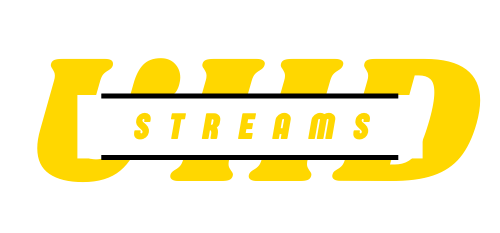
Education is one of the most powerful tools for personal growth and social progress. Yet, despite its importance, many individuals face financial barriers that prevent them from accessing quality learning opportunities. Thankfully, with the rise of digital technology, cost-effective learning options are helping to break down these barriers and provide accessible education to a wider audience. This post explores how cost-effective learning methods are reshaping education and making it more accessible for everyone.
1. The Challenge of Affordability in Education
The High Costs of Traditional Education
For many students, the cost of attending traditional educational institutions can be overwhelming. Tuition fees, textbooks, and living expenses add up quickly, making it difficult for individuals from low-income backgrounds to pursue their academic dreams. Even with scholarships and financial aid, the burden of student loans often creates long-term financial challenges.
Global Disparities in Access to Education
Education costs are not just a concern in developed countries. In many regions of the world, even basic education is out of reach for large segments of the population. Whether due to financial constraints, lack of infrastructure, or political instability, many students are unable to attend school or gain access to higher education.
2. The Rise of Online Learning
Affordable and Accessible Online Courses
Online learning has dramatically changed the landscape of education, offering a cost-effective alternative to traditional in-person schooling. With just an internet connection, students can access a wide range of courses from top universities, institutions, and organizations, often at a fraction of the cost of attending in person. Platforms like Coursera, edX, and Udemy offer high-quality content that can be accessed anywhere, making education more accessible than ever before.
The Benefits of Online Learning
- Lower Costs: Online courses often have significantly lower fees compared to traditional programs. Many courses are free or offer affordable options, which makes learning accessible to students with limited financial resources.
- Flexibility: Online learning offers flexibility in terms of time and location, enabling students to learn at their own pace and from the comfort of their homes. This flexibility is especially beneficial for working professionals or students with other commitments.
- Wide Range of Options: Online platforms offer courses in various subjects, from tech and business to humanities and arts. This diversity allows students to pursue interests that align with their career goals without being limited by location or financial constraints.
3. Open Educational Resources (OER)
What Are Open Educational Resources?
Open Educational Resources (OER) are freely available materials that can be used for teaching, learning, and research. These resources, which include textbooks, lecture notes, videos, and software, are often created and shared by educators and institutions to promote knowledge sharing and accessibility.
The Power of OER in Cost-Effective Learning
OER provide students with access to high-quality learning materials without the financial burden of purchasing textbooks or other course materials. By utilizing OER, students can save money and still access a wealth of knowledge from reputable sources.
Key Benefits of OER
- Free Access: OER is available to everyone, regardless of financial status, providing equal access to learning resources.
- Customizability: Many OERs allow educators to modify or adapt materials to suit the specific needs of their students, enhancing the learning experience.
- Global Reach: OER can be shared and used by students and teachers worldwide, fostering a global learning community.
4. Microlearning and Bite-Sized Content
Learning in Small, Manageable Chunks
Microlearning is an innovative approach that delivers content in small, digestible segments. This method allows students to learn in short bursts, making it easier to fit education into their busy lives. Microlearning modules are often designed to be highly focused, addressing specific skills or concepts that can be quickly mastered.
How Microlearning Reduces Costs
- Lower Time Investment: Because microlearning modules are short, students don’t need to commit to long hours of study, making it a time-efficient way to learn.
- Affordable Pricing: Many microlearning platforms offer courses at a lower cost, or even for free, allowing students to access quality education at an affordable price.
- Self-Paced Learning: Students can learn at their own pace, which is especially useful for those balancing education with work or family responsibilities.
5. Peer-to-Peer Learning and Collaborative Platforms
Harnessing the Power of Community
Peer-to-peer learning is an effective, cost-efficient way to enhance the learning experience. Through platforms like forums, study groups, and collaborative projects, students can share knowledge, ask questions, and support one another. This form of learning not only fosters a sense of community but also reduces the cost of formal education.
The Benefits of Peer-to-Peer Learning
- Free Learning Opportunities: Many peer-to-peer platforms are free, allowing learners to connect and share knowledge without any financial investment.
- Collaborative Learning: By working together, students can gain different perspectives on the material, enhancing their understanding and reinforcing concepts.
- Mentorship: More experienced learners can help guide others, providing valuable support at no extra cost.
6. Scholarships and Financial Aid in the Digital Era
Access to Financial Assistance
Scholarships and financial aid are critical for students who cannot afford the full cost of education. In recent years, the number of scholarships for online learning and microcredentials has grown, providing more students with access to quality education without the financial burden.
How Scholarships Enhance Cost-Effective Learning
- Open to All: Many online learning platforms offer scholarships, financial aid, or discounts for students, making education even more affordable.
- Targeted Support: Scholarships can be offered to students from underrepresented or low-income backgrounds, helping to bridge the gap and provide equal opportunities for all.
- Flexible Payment Options: Some online platforms provide flexible payment plans, allowing students to pay in installments or after completing the course, making it easier to manage education costs.
7. The Future of Cost-Effective Learning
Advancements in Technology and Education
The future of cost-effective learning looks promising, thanks to the continuous advancement of technology. With developments in artificial intelligence, virtual classrooms, and automated assessments, education is becoming more efficient and accessible. These technologies promise to reduce costs further, making education even more affordable for students around the world.
Personalized Learning at Scale
As personalized learning platforms evolve, students will have access to even more customized and cost-effective educational experiences. Adaptive learning technologies will provide learners with tailored resources, helping them learn at their own pace and in the most efficient way possible. This flexibility will make it easier for individuals to pursue their educational goals, regardless of their financial situation.
8. Overcoming Barriers and Promoting Equal Access
The Importance of Digital Inclusion
While cost-effective learning options are expanding, it’s important to ensure that everyone has access to the necessary technology. Digital inclusion efforts aim to bridge the gap for students who lack access to reliable internet or devices, ensuring that the benefits of online education reach all learners.
Creating a More Inclusive Education System
By investing in affordable learning tools, scholarships, and digital access initiatives, we can work toward a more inclusive education system. This will help break down barriers that prevent individuals from pursuing their educational goals, regardless of their financial background or location.
Conclusion
Cost-effective learning is transforming education by breaking down financial barriers and providing more people with the opportunity to access quality education. From online courses and open educational resources to microlearning and peer-to-peer platforms, these innovations are reshaping the future of education. By continuing to embrace these affordable learning methods, we can ensure that education becomes a right, not a privilege, for people around the world. Through technology, collaboration, and equitable access, the future of learning is bright, inclusive, and accessible to all.



Leave a Reply